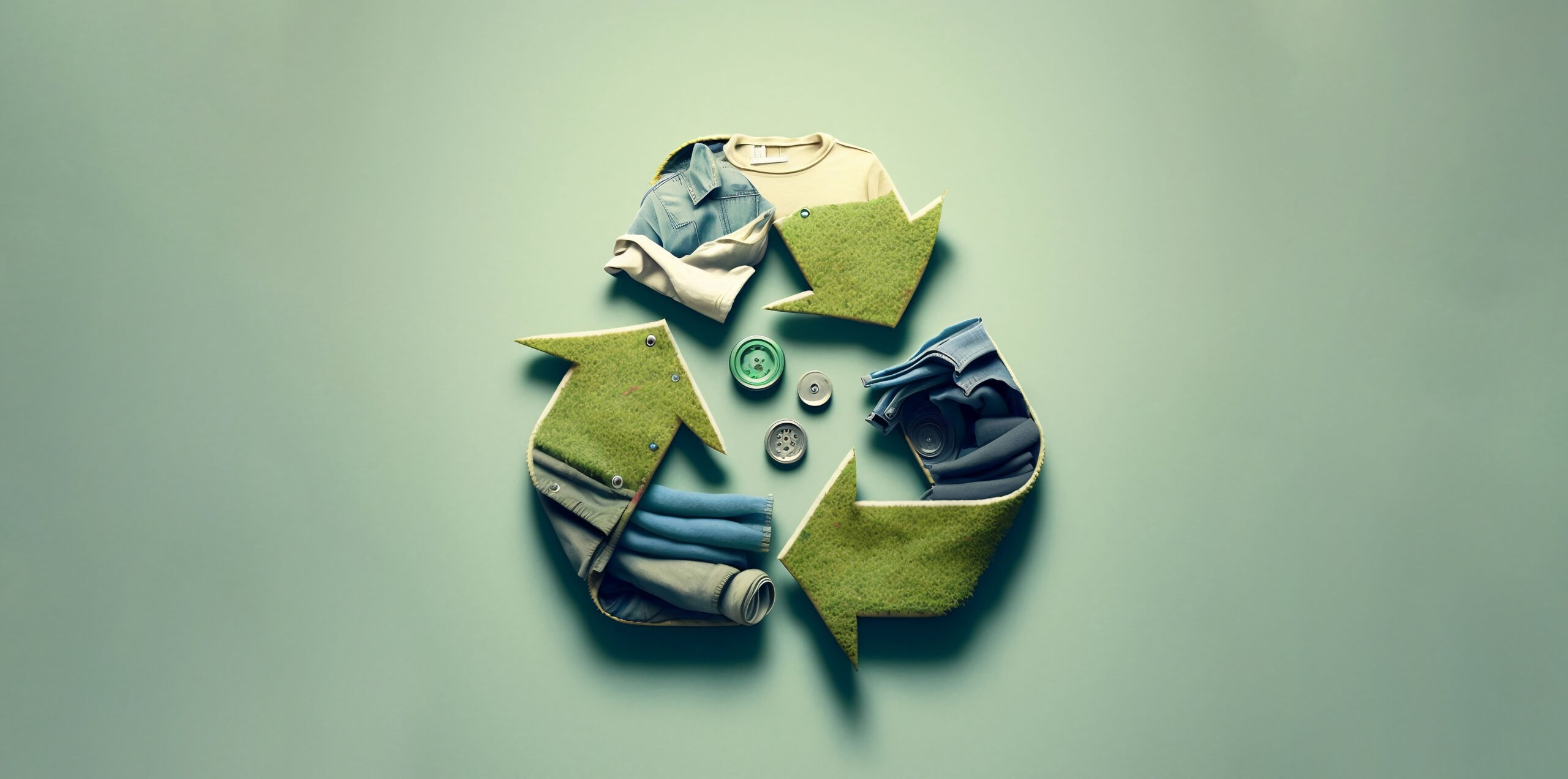Cape Town Sustainable Fashion Designers Leading the Eco-friendly Activity
Cape Town Sustainable Fashion Designers Leading the Eco-friendly Activity
Blog Article
Remain Ahead of the Contour by Exploring Innovative Fashion Patterns
In a market as vibrant as style, staying ahead involves even more than just adhering to present trends-- it demands an expedition of advancement. Smart fabrics, for circumstances, are changing garments right into useful masterpieces, while 3D printing is transforming style processes with its adjustable, waste-reducing capabilities. As sustainability comes to be a foundation, advancements like environment-friendly materials and circular style techniques are improving environmental responsibility - Cape Town Sustainable Fashion. Additionally, the merging of technology and style heralds a new period of consumer involvement. How, then, can these arising trends redefine the future of style, and what implications do they hold for brand names looking for to flourish in this progressing landscape?

Welcoming Smart Textiles
In recent times, the garment industry has actually experienced a transformative shift with the assimilation of smart textiles, a sophisticated development that blends innovation with material. This evolution stands for not just a blend of aesthetic appeals and capability yet additionally a significant leap in the direction of sustainability and personalization in vogue. Smart textiles, also called e-textiles, embed advanced electronic devices such as sensors and conductive strings within the fabric, enabling garments to connect with the environment or the wearer.
These textiles are created to check physiological specifications, such as heart rate or body temperature, giving real-time health and wellness analytics. Beyond wellness applications, wise textiles are additionally being made use of for flexible clothing, which can change color or pattern in response to ecological stimuli, thus offering a dynamic style experience.
In addition, the development of energy-harvesting fabrics that generate power from movement or sunlight is leading the way for self-sufficient wearable innovation. This advancement is interesting environmentally mindful customers and designers aiming to decrease the eco-friendly impact of fashion. As r & d in this field advance, clever textiles are anticipated to end up being significantly widespread, improving the landscape of contemporary fashion with their multifunctional capabilities.
The Surge of 3D Printing
Revolutionizing the production landscape, 3D printing has become a game-changer in the apparel industry. This cutting-edge modern technology has made it possible for developers to press the borders of creativity, producing intricate and customized garments that were formerly unimaginable. By leveraging digital layout and additive manufacturing, 3D printing helps with the development of intricate geometries and patterns, allowing developers to trying out brand-new textures and frameworks.
A significant advantage of 3D printing in vogue is its ability to produce on-demand, minimizing waste and decreasing supply needs. This performance not only optimizes manufacturing procedures yet additionally allows for quick prototyping, enabling designers to bring their visions to life in a shorter duration. Furthermore, 3D printing supports modification to a degree unparalleled by standard methods, offering tailored fits and special styles tailored to private customer preferences.
The rise of 3D printing has actually additionally equalized style, making it available to arising developers that can now produce high-quality items without substantial monetary investment in traditional manufacturing framework. As modern technology remains to development, the fashion business is positioned to harness the full capacity of 3D printing, discovering brand-new materials and techniques that will unquestionably redefine how style is developed and produced.
Lasting Fashion Innovations
As the apparel industry faces the pressing demand for environmental obligation, sustainable fashion advancements have actually emerged at the center of transformative modification. The growing awareness of eco-friendly effect has fueled a change in the direction of more eco-conscious methods and materials. Developers and brands are currently focusing on sustainability, including methods that lessen waste and minimize carbon footprints.
One significant growth is the rise of circular style, which emphasizes recycling and upcycling to prolong the lifecycle of garments. This strategy not just decreases waste however additionally urges customers to take on an extra conscious method to clothes usage. Furthermore, making use of lasting products, such as organic cotton, hemp, and recycled polyester, has actually obtained traction. These materials require much less water and energy throughout production, dramatically decreasing ecological effect.
One more advancement hinges on the fostering of ingenious dyeing methods that make use of natural dyes or waterless procedures, therefore minimizing the huge quantities of water and chemicals typically used in fabric dyeing. Additionally, innovations in biotechnology have caused the production of lab-grown natural leather and materials, providing environmentally friendly and cruelty-free options to traditional products. Through these introducing initiatives, the fashion market is making significant strides towards an extra lasting future.

Tech-Integrated Clothing
Tech-integrated garments represents a groundbreaking combination of style and innovation, reshaping exactly how people interact with their clothing. This cutting-edge domain name is marked by the inclusion of wise fabrics and embedded electronic elements, enhancing both functionality and visual allure. From health and fitness trackers installed in sports apparel to heated jackets controlled by means of mobile phone apps, tech-integrated apparel supplies consumers extraordinary benefit and versatility.
Pioneering brands are driving this fad, focusing on creating garments that reply to environmental stimuli or individual commands. For example, some garments can transform color or pattern in feedback to temperature level changes, while others integrate biometric sensors to keep an eye on health metrics like heart price or tension levels. The seamless assimilation of modern technology into textiles additionally encompasses environmental sustainability, with efforts to establish self-cleaning materials or garments that adjust to weather, thus reducing the demand for multiple layers.
In addition, the development of wearable technology is not simply restricted to garments but reaches accessories like watches and glasses, more widening the range of tech-integrated style. As the sector proceeds to introduce, the capacity see for customization and customization in garments grows, providing customers unique, tech-enhanced style experiences that satisfy their individual requirements and preferences.
Future of Virtual Style
Over the last few years, the future of online style has become a transformative pressure within the industry, leveraging developments in digital modern technology to redefine exactly how style is produced, experienced, and consumed. By incorporating augmented truth (AR), digital reality (VIRTUAL REALITY), and 3D layout devices, developers can now craft immersive and interactive experiences that transcend conventional fashion borders. Virtual fashion enables for the creation of garments that exist entirely in electronic environments, providing endless opportunities for innovation without the restrictions of physical manufacturing.
This electronic change not just provides opportunities for imaginative expression yet also addresses sustainability worries intrinsic in standard style techniques. Cape Town Sustainable Fashion. By getting rid of the need for physical sources, virtual fashion reduces waste and minimizes carbon impacts. Moreover, the rise of digital fashion lines up with the increasing customer demand for customized and unique experiences, as digital garments can be Discover More Here tailored and tailored to private preferences effortlessly

Conclusion
The apparel industry's future depend on the combination of sustainable methods and cutting-edge innovations - Cape Town Sustainable Fashion. Smart textiles and tech-integrated clothing are improving capability, while 3D printing supplies possibilities for modification and waste reduction. Lasting style, with green materials and circular approaches, demonstrates a commitment to environmental stewardship. In addition, virtual style is poised to redefine consumer communications. Adapting to these fads is necessary for brands seeking to remain appropriate and affordable in this swiftly progressing landscape.
In recent years, the style industry has experienced a transformative shift with the integration of clever fabrics, an advanced technology that blends technology with textile.As the fashion industry grapples with the pushing demand for environmental duty, lasting fashion innovations have actually emerged at the leading edge of transformative adjustment.In current years, the future of online style has arised as a transformative force within the market, leveraging advancements in electronic modern technology to redefine just how fashion is created, experienced, and eaten. The surge of virtual style lines up with the boosting Recommended Reading customer need for personalized and one-of-a-kind experiences, as virtual garments can be customized and tailored to private choices with simplicity.
The fashion market's future lies in the integration of lasting practices and ingenious technologies.
Report this page